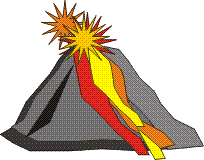"Man is very tiny, but if he listens he can hear the earth's heartbeat." ~ Thomas Augustus Jaggar Jr.
 Those on the Big Island of Hawaii can listen to the heartbeat of two volcanoes, Mauna Loa and Kilauea.
Those on the Big Island of Hawaii can listen to the heartbeat of two volcanoes, Mauna Loa and Kilauea.
The eruption of Mauna Kea on this day in 1867 caused the largest earthquake in Hawaii, registering the equivalent of 8 on the Richter Scale. Mauna Loa ("Long Mountain") rises just over 13,600 feet above sea level.
The majestic wonder has erupted 39 times since 1832. The last eruption ended in 1984.
Volcanologist Thomas Augustus Jaggar, Jr. (1871–1953) lobbied fiercely until the Volcano Observatory was built in 1912 on the lip of Kilauea, the most active volcano on earth. Jaggar believed a scientist living near a live volcano "will learn more in an hour than he ever dreamt of in years at the university."
Kilauea rests at the southeastern tail of the islands and its current eruption (called Pu`u `O`o) has flowed continuously since 1983. Inside Kilauea is the 1.2-mile wide vent of Halemaumau Crater, called the "Enduring House of Pele," where the legendary Hawaiian volcano goddess lives.
Hawaiian legend credits Pele with causing volcanic eruptions and directing the course of her lava flows. Offerings of alcohol, flowers, or sacred berries are still left to appease her fiery wrath.
